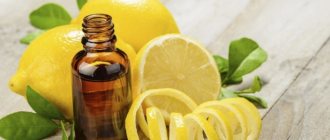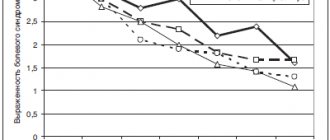Palm oil is obtained from the fruits of the oil palm tree, which is grown all over the globe. It is a vegetable fat that is widely used in the food industry. Palm oil is an inexpensive raw material. It is added to various foods. It is found in baby food, chocolate, baked goods, cottage cheese, cream, and ice cream.
The product contains a high concentration of palmitic acid. Therefore, disputes about the dangers and benefits of palm oil are increasingly arising. Let's consider this issue in more detail.
Varieties
The following types of oils are extracted from the fruits of the oil palm: raw palm, palm kernel. This is the most common and cheapest product among vegetable fats. Due to this, it is widely used in food production.
Currently, oil palm is cultivated in South America, West Africa, Indonesia, Malaysia and Southeast Asia.
Crude oil is obtained by processing the pulp of the fruit, which contains up to 70% fat. Only the product that has gone through several stages of refining is suitable for food. Otherwise, unrefined oil is used only for technical purposes - for making candles, soap and lubricating spare parts.
European quality
There is another common thesis - about carcinogenicity, which is supposedly high in “palm” due to glycidyl ethers. What are these substances?
Glycidyl esters are formed during refining at high temperatures, and therefore are found in all oils - olive, sunflower, rapeseed, and soybean. They do not affect the quality of the product. And for the effect on health to manifest itself, a person must eat several kilograms of oil daily. But in such quantities, healing honey will cause serious harm to the body.
Therefore, in most countries (USA, Japan, Latin American countries, etc.) they do not pay attention to glycidyl ethers. There are restrictions on them only in Europe. For EU countries it is more a matter of increasing production levels. By the way, large manufacturers in Russia have also modernized their equipment - now the amount of glycidyl ethers we have is the same as in European countries.
Question answer
Why is solid fat necessary for baking?
Production principle
On the plantations, fruits are collected, which are transported to the plant for further processing. The collected bunches are treated with dry hot steam to separate them. After this, the fruit pulp is pre-sterilized and then pressed. The resulting raw material is heated to 100 degrees and placed in a centrifuge to separate liquid and foreign matter.
Oil refining stages:
- elimination of mechanical impurities;
- hydration (extraction of phospholipids);
- neutralization (removal of free fatty acids);
- whitening;
- deodorization.
Palm kernel oil is a product obtained by extracting or pressing kernels from seeds. Its degree of digestibility is 97%.
Types of palm oil used in the food industry:
- Standard. Melts at a temperature of 36-39 degrees. Area of application: baking and frying. During the cooking process it does not create smoke or burning. Products prepared with standard palm oil should be consumed warm. Otherwise, the dish will harden and become covered with an unaesthetic film.
- Olein. The melting point of the product is 16-24 degrees. Used for frying meat and dough. Has the consistency of cream. Widely used in the cosmetics industry.
- Stearin. It has the highest melting point among the three types of oil. It is 48-52 degrees. It is the hardest fraction of palm oil. Industries of application: cosmetology, metallurgy, food industry. Included in margarine.
A distinctive feature of palm oil from other vegetable oils is its solid consistency. The longer a product is stored, the higher its melting point becomes. So, for fresh palm oil it is 27 degrees. And for a product with a week-long aging period it increases to 42 degrees.
Oil is a source of fat-soluble vitamins A, , . The freshly produced palm product is light orange in color due to its high beta-carotene content. In the food industry, only bleached oil is used. To do this, it is heated in an oven to 200 degrees and cooled. Under the influence of ultraviolet radiation and oxygen, the natural dye beta-carotene is destroyed, as a result, palm oil becomes discolored and loses part of its value.
Doctor's comment
Leading cardiologist at the Medsi children's clinic, Ekaterina Karedina, notes that raw palm oil is an excellent source of saturated fatty acids, antioxidants, vitamins A and D. Proper intake of high-quality palm oil helps protect the body from the destructive effects of free radicals, destruction of nerve cells, and brain tissue. .
The active substances included in the product prevent the occurrence of cardiovascular diseases. The combined effect of vitamins and fatty acids stimulates glucose metabolism and prevents the development of diabetes.
You should eat unrefined palm oil, which retains all the valuable substances. Finished products presented in stores use refined oil that is devoid of beneficial properties.
As for baby food, it must contain palmitic acid. It has a different molecular structure from the natural palmitic acid found in breast milk. Absorption of palmitic acid from breast milk does not cause problems in the baby's body. The product, obtained from palm oil and included in adaptive mixtures, goes through the stage of binding with calcium. This process causes the formation of insoluble substances that are excreted from the child’s body in feces. Infants receiving such formulas are susceptible to stool retention and also suffer from loss of calcium and valuable fats.
Parents of bottle-fed babies have nothing to fear. Palm oil, which is included in baby food, undergoes complex, high-quality purification, safety and quality testing.
Chemical composition
100 ml of palm oil contains 884 kcal, with 99.7 g of fat and 0.1 g of water. The chemical composition of the product is represented by vitamins E (33.1 mg), A (30 mg), (0. 3 mg), K (0.008 mg) and phosphorus (2 mg). Sterols account for 100 mg. In addition, traces of lecithin, phytosterols, squalene and coenzyme Q10 were found.
According to research results, it has been established that the oil contains palmitic acid, which enhances the natural production of cholesterol.
As a result, the human body begins to intensively synthesize an organic compound in an uncontrolled amount, which in turn increases the risk of vascular and heart pathology. Fat composition of palm oil
| Components | Content per 100 grams of product, grams |
| Saturated fatty acids | |
| Lauric | 42,5 |
| Myristic | 11,9 |
| Stearic | 7,4 |
| Palmitic | 6,3 |
| Kaprinovaya | 3,8 |
| Caprylic | 3,3 |
| Arachinovaya | 1,1 |
| Monounsaturated fatty acids | |
| Oleic | 14,0 |
| Palmitoleic | 0,5 |
| Polyunsaturated fatty acids | |
| Linoleic | 2,4 |
The World Health Organization strongly recommends reducing your intake of fatty acids. Dangerous foods include palm oil, butter, chocolate, lard, cream, meat, and eggs. According to the European Food Safety Authority (EFSA), the maximum permissible intake of fatty acids is 10% of a person's energy intake, including alcohol. In other words, with a caloric content of oil of 884 kcal per 100 ml and a content of 44% palmitic acid in it, the safe daily dose of palm fruit squeeze is 10 ml, provided that there are no other sources of fatty acids in the diet.
Conclusion
For the human body, natural palm oil that has not undergone complex industrial purification and processing is valuable. The full technological cycle leads to oxidation of the product and loss of nutrients.
Red palm oil should be included in the diet, while maintaining a dosage of no more than 10 ml per day. Failure to follow the recommendations leads to the fact that palmitic acid begins to have a toxic effect on the body - it destroys bone tissue, causes metabolic disorders, and impairs brain activity. The result of chronic intoxication can be severe diseases (diabetes, obesity).
To minimize the negative impact of low-quality palm oil, you should exclude fast food, fast food products, processed cheese, yoghurt, flour, and confectionery products from your diet. Take the time to read the label. This is the only way you can be sure that cheese, ice cream, cake or cookies contain butter and not hydrogenated palm oil or stearin.
Author of the article:
Kuzmina Vera Valerievna |
Endocrinologist, nutritionist Education: Diploma of the Russian State Medical University named after. N.I. Pirogov, specialty “General Medicine” (2004). Residency at the Moscow State Medical and Dental University, diploma in Endocrinology (2006). Our authors
Effect on the body of infants
As a result of clinical studies, it was found that infant formula containing palm olein reduces the absorption of calcium compared to foods that do not include it. And the digestibility of the macronutrient decreases from 57.4% to 37.5%.
In addition to decreased calcium absorption, fat excretion in stool increases. It becomes denser and constipation develops.
The malabsorption of the macronutrient is caused by the special arrangement of palmitic acid relative to the palm olein fat molecule. Under normal conditions, it is in a lateral position. After starting the process of digesting baby food in the intestines, it is split off, binding calcium in a free state. As a result, insoluble salts are formed: calcium palmitate. Essentially, this is soap that is not absorbed in the digestive tract, but is excreted in transit through the stool.
To avoid blocking the absorption of the mineral, the position of palmitic acid is artificially changed in olein. This product is called beta palmitate. As a result, structured oil with palmitic acid does not break down, does not form soap with calcium and is absorbed in the gastrointestinal tract unchanged.
Myths or reality
Palm oil is a product that causes a lot of controversy and misconceptions regarding its benefits and harms. Some claim that it is a natural source of tocopherols and beta-carotene, others insist that it is transformed into plasticine in the human body and disrupts intestinal patency. In addition, there is an opinion that raw materials for oil production are transported in oil tankers, as a result, they pose a threat to human health and cause cancer.
Let's consider the main guesses about fat and oil products, and whether they have a reasonable basis for existence.
Myth #1 “Palm oil contains dangerous trans fats”
It is not true. These compounds are not included in the product. What is the danger of trans fats? They replace beneficial fatty acids at the molecular level from cell membranes, disrupting cell nutrition and blocking enzymes. As a result, metabolic reactions slow down, which leads to the development of chronic diseases of the endocrine, digestive, cardiovascular, and genitourinary systems.
Myth No. 2 “For production, industrial palm oil is used, brought in petroleum product tanks from Indonesia and Malaysia.
Lie. The raw materials used for the production of oil must meet the requirements for food products, otherwise it is prohibited for use at the legislative level of the country. In addition, it is additionally cleaned and deodorized, as a result of which it loses its color, smell and taste.
Transportation stories are nothing more than inventions of competitors. To transport palm oil, specially equipped tanks are used that meet all safety requirements. Before loading raw materials, tank containers are thoroughly cleaned (steamed, washed, dried) of the remnants of the previous product. In addition, it is prohibited to transport palm oil in containers that previously contained non-edible, toxic cargo. Transportation of products is controlled by international organizations.
Myth No. 3 “Palm oil has no value for the human body”
Incorrect statement. It is a source of coenzyme Q10, carotenoids, tocotrienols, tocopherols, polyunsaturated fatty acids (omega-3), vitamins B4, F.
When choosing oil for food purposes, remember that refined and deodorized products are free of foreign matter and are partially devoid of beneficial substances. Therefore, it is recommended to give preference to unrefined types. Such oils should not be subjected to heat treatment; they are best used as a food additive for salads. These products include red palm oil. It fully retains all the beneficial properties listed above.
Myth No. 4 “Palm oil is extracted from the trunk of a palm tree”
This is a misconception. The product is obtained exclusively from oil palm fruits by squeezing it from the kernel or pulp. The main feature is its naturally solid consistency. Interestingly, the further south the tree grows, the more saturated fatty acids are contained in the fruits, and the further north, the more PUFAs. Because of this, the oil obtained in southern tropical countries has a solid structure. This property of the product provides the desired shape for ready-made food and confectionery products.
Myth No. 5 “Palm oil, when it gets into the stomach, behaves like plasticine - it does not melt, but is a sticky mass that seals the body from the inside.”
Absurd conclusion. When it enters the digestive tract, the product acquires the consistency of an emulsion. Palm oil is absorbed in the body in the same way as other foods. In moderate quantities (10 ml) it does not pose a risk to human health. According to the tenets of a healthy diet, the recommended amount of fat in the diet of an adult should not exceed 30% of the total amount of energy consumed. Of which, MUFA and PUFA account for 6-10% each, saturated fatty acids – up to 10%.
Myth No. 6 “Manufacturers prefer palm oil because of the low cost of raw materials”
Indeed it is true. The cheapness of oil is due to the high productivity of plantations of the main suppliers of raw materials (Indonesia and Malaysia). In addition, it is very technologically advanced. The solid structure of the product makes it attractive for use in the food industry (confectionery and bakery). Previously, liquid oils were used that were hydrogenated to thicken and harden. As a result, they accumulated dangerous trans fats and caused harm to the body. A modern alternative to them is palm oil. It is safe and of high quality from nature.
Myth No. 7 “Food products with palm oil are banned in developed countries”
It is not true. No country has banned palm oil. Moreover, it accounts for 58% of vegetable fat consumption in the world market.
Environmental harms of consuming palm oil
Palm oil is also harmful to the environment, since due to the high global demand for this affordable product, large-scale deforestation is observed, on the site of which oil palm nurseries are located. The forests of Malaysia, as well as Indonesia, which are leaders in palm oil production, are in danger. This type of vegetable fat has been used in cooking by local peoples for many years, but not in the quantities required to feed the world's growing population. Deforestation leads to an environmental disaster with the inevitable death of animals that have lost their home. Over the past 50 years, the area of rain forests on the island of Kalimantan, where oil palm is grown, has decreased by 41 thousand sq. km. This led to the massive death of orangutans, already on the verge of extinction.
According to estimates, each person consumes from 5 to 21 kg of Palm Oil per year, depending on their place of residence and area of application. Recently, oil palm raw materials are also actively used as biofuel for refueling cars and other types of transport.
REVIEWS OF COURSE PARTICIPANTS Tatiana Metelskaya
| Nina Khramtsova _nina_1203 |
I am a participant of the 3rd stream. And to say that I am satisfied with the weight loss course is to say nothing. I’m just happy that on the Internet I found such a cool trainer who will get you hooked on sports and will plan your nutrition correctly (with all sorts of goodies









